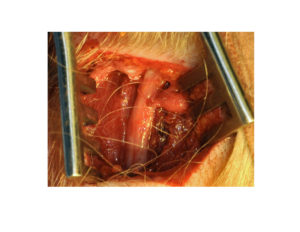Headaches or migraines coming from the occipital region (back of the head) is a chronic pain issue for some people that comes from numerous pathologies. The common origin is nerve inflammation (neuritis) and one potential cause is nerve compression from the surrounding muscle. This has now been identified as one potentially treatable occipital migraine cause through surgical decompression.
In my Indianapolis plastic surgery practice, I have found that Botox injections and surgical decompression by the select removal of muscle around the occipiptal nerve to be effective for a specific subset of migraine patients. When other potential sources of the pain have been worked up and managed by a neurologist and have failed, surgical decompression may be of benefit if the physical examination has a positive finding. This finding is very straightforward to determine by touching the area and watching how the patient responds. Point tenderness and or a shooting nerve sensation up the scalp are definitive signs. Much like carpal tunnel syndrome, compression of the occipital nerve where it comes through the muscle can be the source of migraine pain and attacks.
The greater and lesser occipital nerves are major nerves of feeling that come out from the muscles at the back of the scalp and run upward. They provide feeling to the back of the scalp. The greater occipital nerve is the larger one and it comes out of the semispinalis capitis muscle a few cms off of the midline and below the occipital protuberance. The lesser occipital nerve is more to the side and comes into the scalp off of the sternocleidomastoid muscle. Because the greater occipital nerve pierces the muscle, surgical decompression is primarily aimed at its treatment.

Dr. Barry Eppley
Indianapolis, Indiana


